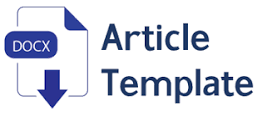SISTEM INFORMASI AKUNTANSI PERHITUNGAN INSENTIF OPERATOR BERBASIS WEB PADA TERMINAL PETIKEMAS BANJARMASIN PT. PELABUHAN INDONESIA III (PERSERO) REGIONAL KALIMANTAN)
Keywords:
Incentive Calculation Application ProgramAbstract
The success of the company is very dependent on quality human resources and is appreciated for their performance by providing operating incentives so that they can increase employee motivation, as a reward for employee attitudes, and the company will more easily achieve its goals if employees always achieve company targets. Therefore, it is necessary to calculate the right operator incentives to avoid mistakes in the process of providing incentives that have an impact on employee performance. This study aims to create a web-based accounting system for calculating employee incentives. The research method used is research and development/ R&D with a case study of Banjarmasin Container Terminal PT. Indonesian Port III (PERSERO) Kalimantan Region. The results of the study can be applied to simplify the process of calculating employee incentives to avoid errors in the input process
References
R. M. Nuryana and D. Hendarsyah, “Pengaruh Sistem Informasi Akuntansi Terhadap Kelebihan Bayar Pajak,” J. Ilm. Akunt. Kesatuan, vol. 9, no. 1, pp. 41–50, 2021, doi: 10.37641/jiakes.v9i1.438.
B. Langi, D. P. E. Saerang, and N. Y. T. Gerungai, “Analisis Sistem Informasi Akuntansi Penggajian Dan Pengupahan Dalam Upaya Pengendalian Internal Pada Pt. Gemilang Emas Indonesia,” Going Concern J. Ris. Akunt., vol. 14, no. 1, pp. 148–153, 2019, doi: 10.32400/gc.14.1.22324.2019.
R. Melasari, “Pengaruh Efektiviats Penggunaan Sistem Informasi Akuntansi, Budaya Kerja, dan Insentif Terhadap Kinerja Karyawan Pada Perbankan di Tembilahan,” Akunt. dan Keuang., vol. 8, no. 2, pp. 138–155, 2019.
M. Bahit, M. Handayani, and R. Haryanto, “Bibliometric Analysis on the Concept of Managing and Integrating ERP (Enterprise Resource Planning) in the MSMEs (Macro, Small and Medium Enterprises) Sector,” Adv. Econ. Bus. Manag. Res., vol. 183, no. Ambec 2020, pp. 5–9, 2021, doi: 10.2991/aebmr.k.210717.002.
J. J. Heckman, R. Pinto, and P. A. Savelyev, “Analisa Sistem Informasi Akuntansi Gaji Dan Upah Dalam Rangka Pengendalian Interen Pada PT. XYZ,” Angew. Chemie Int. Ed. 6(11), 951–952., 1967.
H. I. Wahyudin, A. Widayanti, F. Ilmu, T. Universitas, and R. Sakit, “Aplikasi Perhitungan dan Pencatatan Penerimaan Insentif Jasa Pelayanan Perawat Mempertimbangkan Skor Key Performance Indicator ( KPI ),” in e-Proceeding of Applied Science :, 2020, vol. 6, no. 2, pp. 2175–2178.
M. Handayani, M. Hendra, M. Bahit, and N. Safrina, “Traversal Tree Implementation in Chart of Account Design,” in Advances in Economics, Business and Management Research, 2020, vol. 136, no. Ambec 2019, pp. 152–156, doi: 10.2991/aebmr.k.200415.030.
F. Demografi and P. Kinerja, “Pengaruh Kemampuan Teknik Pemakai Sia, Partisipasi Manajemen, Insentif, Faktor Demografi Pada Kinerja Individu,” E-Jurnal Akunt., vol. 13, no. 2, pp. 446–460, 2015.
I. K. Yadnyana, “Pengaruh Efektivitas Sia Dan Penggunaan Teknologi Informasi Pada Kinerja Individual Dengan Insentif Karyawan Sebagai Pemoderasi,” E-Jurnal Akunt., vol. 19, no. 3, pp. 2175–2204, 2017.
J. Spt and L. Belakang, “Studi Penerapan Pengendalian Intern Sistem Informasi Akuntansi Penggajian Outsourcing,” J. Ilm. UNTAG Semarang, vol. 7, no. 1, pp. 63–81, 2018.
A. A. Mursidah, G. W. Nugroho, and E. Eriswanto, “Analisis Sistem Informasi Akuntansi Penggajian dan Pengupahan (Studi Kasus Pada P. Pratama Abadi Industri JX),” J. Manajemen, Ekon. dan Akunt., no. September, pp. 34–41, 2020.
R. Ermina, Rochmawati, and A. A. G. Agung, “Sistem Informasi Akuntansi untuk Mengelola Kehadiran dan Penggajian Pegawai pada Usaha Koperasi,” J. Telemat. Ed. Ind. Eng. Semin. Call Pap., pp. 102–108, 2018, [Online]. Available: https://journal.ithb.ac.id/telematika/article/view/233/iesc2018.
A. Widhawati and I. G. A. E. Damayanthi, “Pengaruh Efektivitas Penggunaan Sistem Informasi Akuntansi, Budaya Kerja, dan Insentif terhadap Kinerja Karyawan,” E-Jurnal Akunt., vol. 24, p. 1301, Jul. 2018, doi: 10.24843/EJA.2018.v24.i02.p18.







